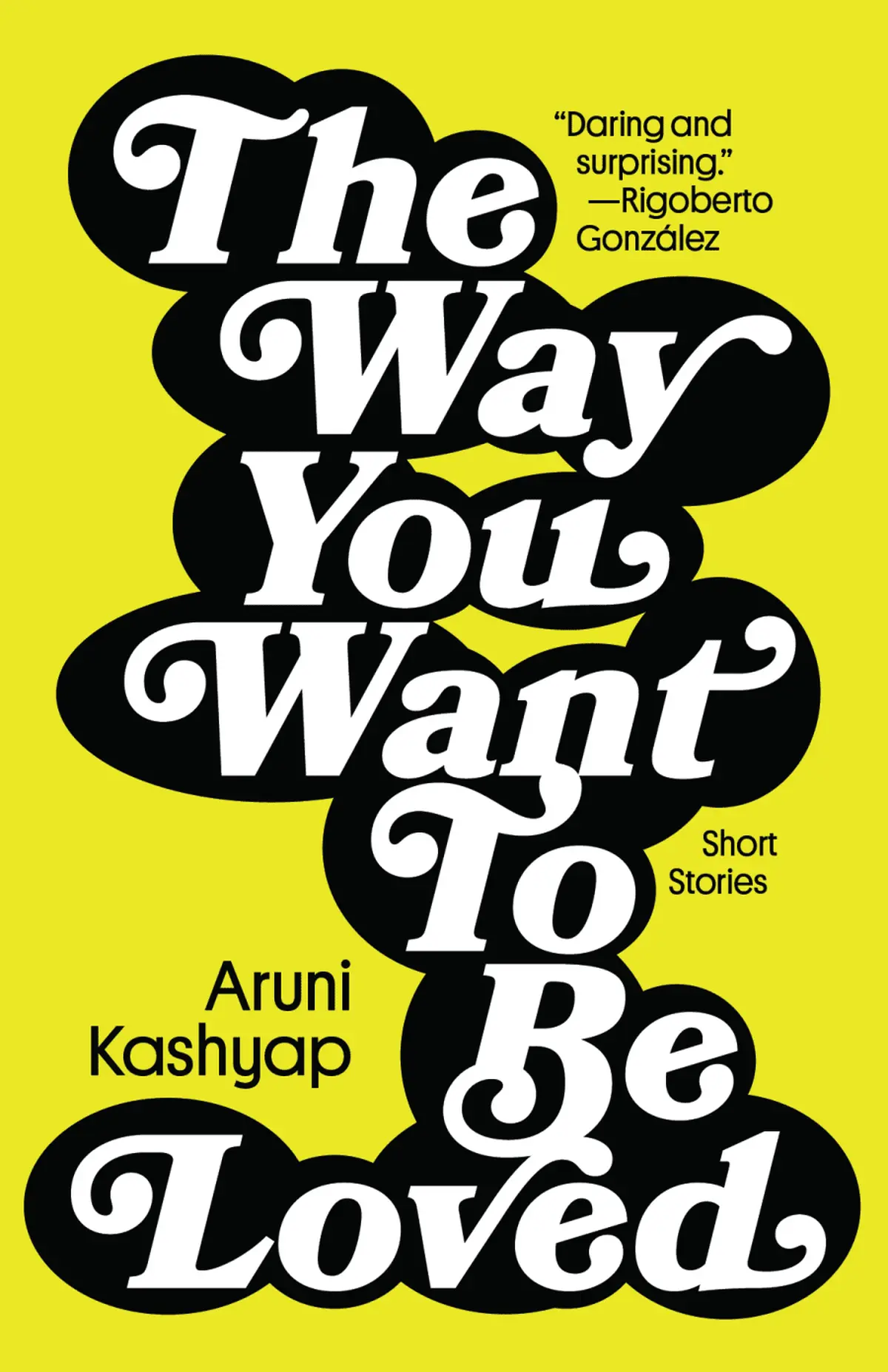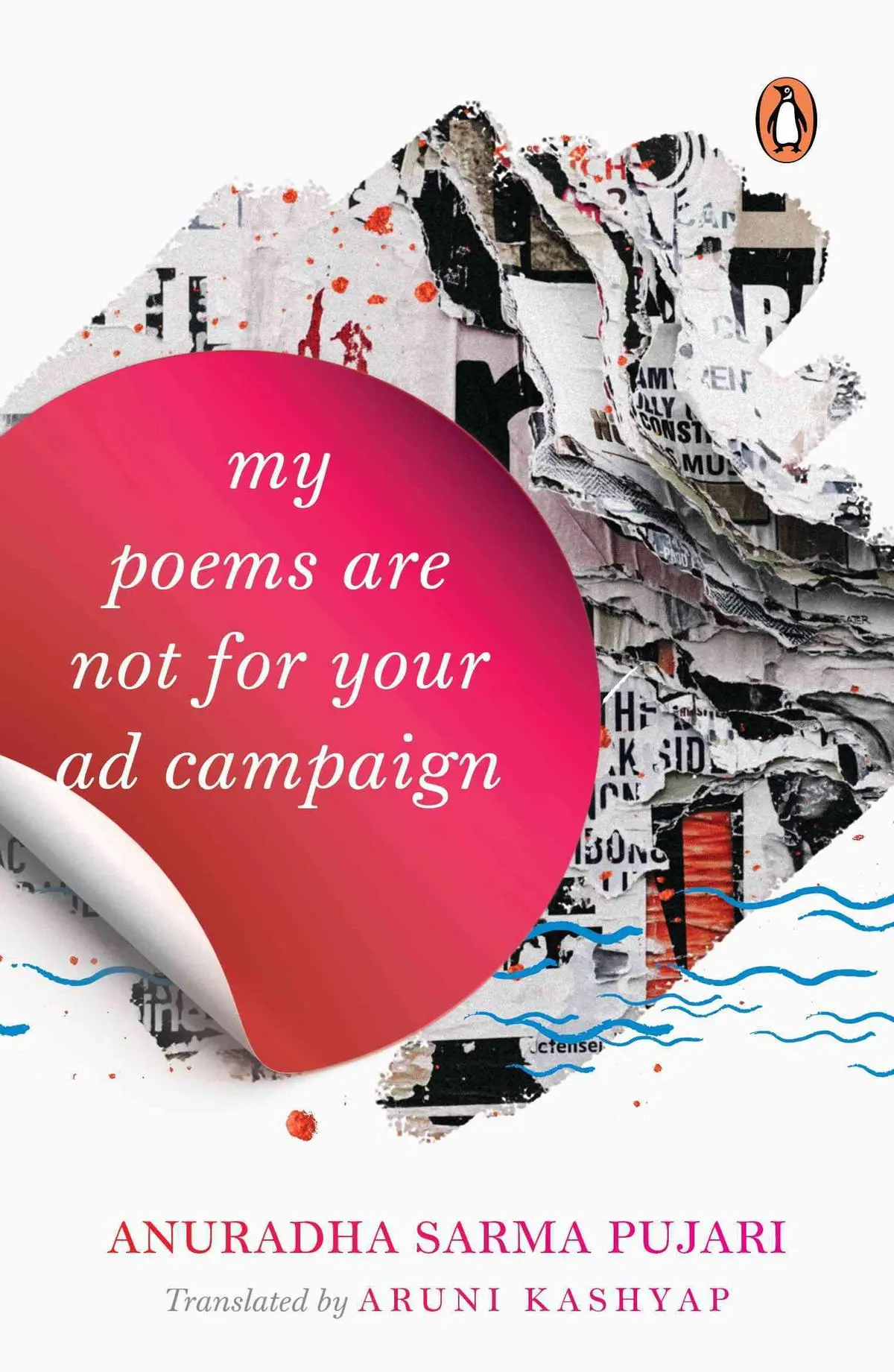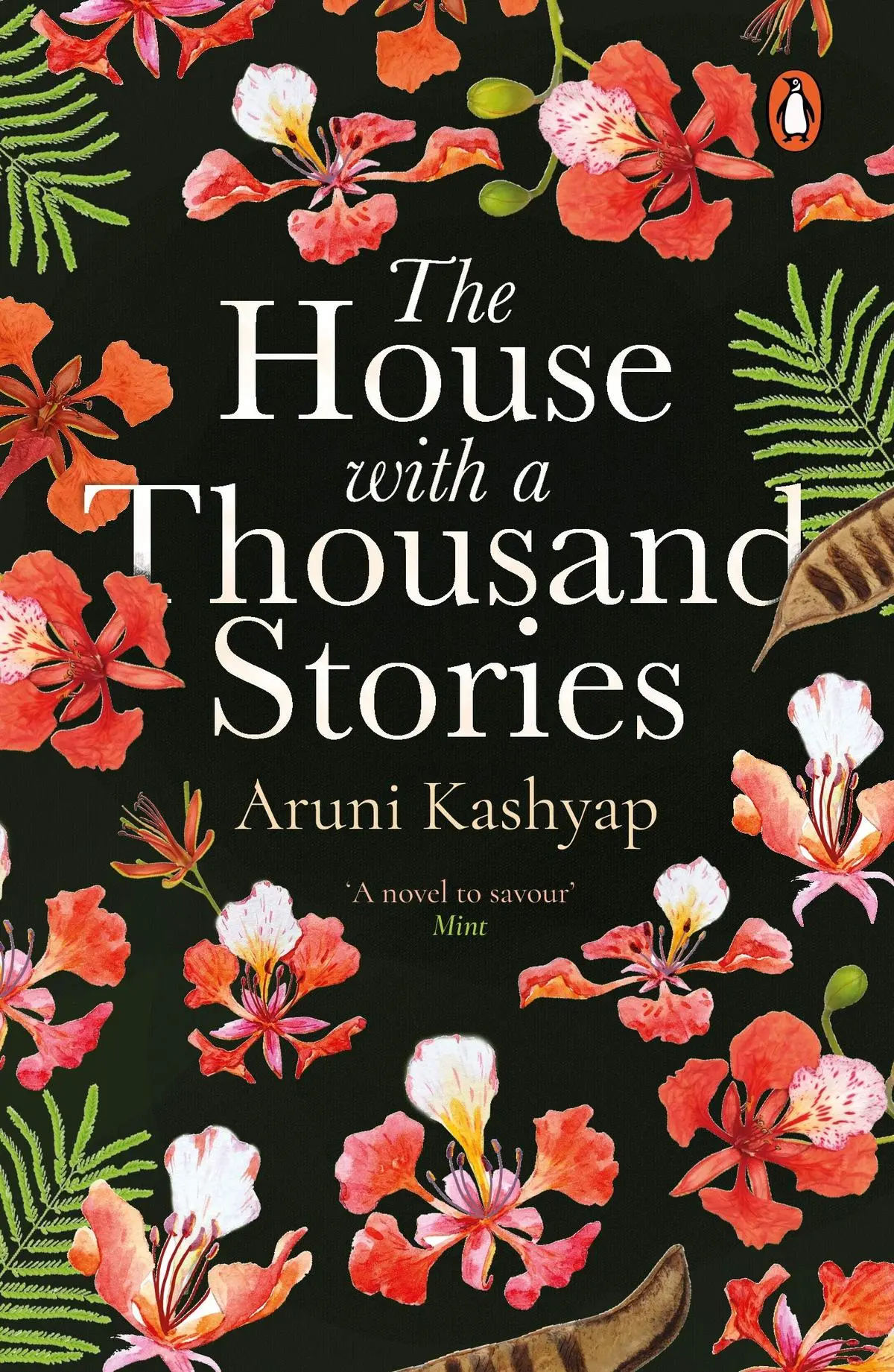When Aruni Kashyap first encountered Langston Hughes’s line “My soul has grown deep like the rivers,” it felt as though the poem had been written for him—a boy who bathed in the Tamulidobha River and crossed the Brahmaputra daily to reach school. Growing up in Assam during the Secret Killings of the 1990s, he witnessed apartment complexes bombed within a mile of his home and friends who missed exams because unrest made leaving the house perilous. That childhood, lived under what he calls a “normalised sense of fear”, now forms the backbone of his fiction.
The son of two writers—his mother a professor of Assamese literature and novelist, his father a historian with 24 books on Assam—Kashyap absorbed European classics through Assamese translations and saw the world refracted through a literary tradition dating back a millennium. Today, he moves fluidly between Assamese and English, creating what he describes as an “intertextual” dialogue that only readers steeped in Assamese literature can fully decode.
His translations of Assamese novels—including Indira Goswami’s The Bronze Sword of Tengphakhri Tehsildar and Anuradha Sarma Pujari’s My Poems Are Not for Your Ad Campaign—have earned nominations for the Armory Square Prize for South Asian Literature in Translation and the VOW Book Awards. As a 2024 Carl and Lily Pforzheimer Foundation Fellow at Harvard’s Radcliffe Institute and Associate Professor at the University of Georgia, he has published fiction in Granta, The Guardian,and The New York Times.
Can you describe your early relationship with books while growing up in Assam?
I grew up around books. My mother was a professor of Assamese literature, a novelist and poet, and my father has written more than 24 books on Assam’s history and culture. They are the real writers in the family; I am barely a shadow. I grew up with my parents’ friends from the Assamese literary world visiting us often, and my brother and I were taken to all the literary conventions that my parents attended. I read a lot of Assamese and Bengali books, some Hindi, but very little in English; I did read a lot of European novels in Assamese translation: I remember Les Misérables was translated to Assamese as Din Dukhi; Tales from Shakespeare by Charles and Mary Lamb was gorgeously translated to Assamese; and most of the American and British classics were available in Assamese. I saw the world through the lens of literature from Assam, and I feel very fortunate that I had that opportunity.
How did Assam’s unique landscape influence your imagination?
I grew up in Assam, and it didn’t seem “unique” to me until I moved out of the State. It was no doubt special: I grew up bathing in the Tamulidobha River in our village despite restrictions and crossed the Brahmaputra every day to go to school, so when I first came across Langston Hughes’s lines “My soul has grown deep like the rivers,” it felt as if the poem was written for me. It was only after I left Assam, I realised what Assam has, is unique, but all of this was always part of my fiction.

The Way You Want to Be Loved explores what it means to love, desire, and long for life under the duress of everyday and state-sanctioned violence and discrimination.
| Photo Credit:
By Special Arrangement
How did living through insurgency and State violence affect your education?
In Assam, the situation was dire: I had the unfortunate front row seat at witnessing how this impacted students, as my mother was a professor. Students missing exams due to unrest were common, and in India, if you miss your annual exams, you must wait for another year! Leaving home was unsafe and stressful: you never knew if you would return home at the end of the day. For Eliot, April was cruel, but for us, in Assam, it was August. The scariest period was the late 1990s during the Secret Killings of Assam. I remember one evening, an apartment complex, less than a mile away from our house, was bombed. We were out on the streets after the sound of the explosion. Journalist and writer Parag Kumar Das was also assassinated very close to where we live—less than five minutes’ walk.
Later, when you moved to cities like Delhi and then to the American Midwest; how did these shifts influence your writing?
I started thinking about my childhood and adolescence in a new light after moving out of the State. This shaped my writing. When I started studying at Delhi University, it became clear to me that my generation grew up under a normalised sense of fear. That the childhood that my generation—that came of age in the nineties—had a different kind of childhood and adolescence than the rest of my classmates in Delhi University. That, even though many of us felt that we had made a choice to move out of Assam to study in Delhi, Bengaluru, and the many large cities of India at a very young age, it wasn’t a choice. It was because we were escaping the insurgency and its long shadow that chases us to Delhi, Minnesota, Sonipat, Atlanta, and Boston. I tried to explore that in my short story collection The Way You Want to be Loved.
Himjyoti in “Minnesota Nice” and “The Umricans,” and Rubul in “Like the Thread in a Garland” are all forced to pick self-exile. Even the story “After Anthropology” is, on the surface is about love and infidelity, but the plot couldn’t have been possible without the insurgency. Even my Assamese novel Noikhon Etia Duroit, which is ostensibly about an immigrant student from Assam in the American Midwest, happens due to the insurgency—inheriting this history gives Rajiv a unique point of view that enables him to note the vagaries of the United States. The exodus of students from Assam is fundamentally tied to the story of the violent political conflict we experienced. Even the major educational institutions that have played a significant role in creating the rising Assamese diaspora emerged after public movements and mass protests. The bulk of the Assamese diaspora is new, but it is the complicated result of the failure of the state.
Also Read | I started self-censoring myself: Hansda Sowvendra Shekhar
The theme of conflict and insurgency in Assam seems to be a powerful thread running through your works. How has this impacted the kinds of stories you choose to tell?
It has enabled me to tell a story about India that we don’t see in Indian English fiction. For a State where the idea of sovereignty has caused so much political turbulence, bloodshed, and heartbreak, the history that I have inherited has nudged me to write books that are outside the conventions of Indian English Writing, and in a way, assert an artistic sovereignty. I don’t suffer from the anxiety of Indian-ness that most Indian English fiction is burdened with. I enjoy a delightful, imaginative, and intellectual sovereignty that is only available in the folk, the aural, and the unwritten, and the vernacular, and for this sovereign imagination I don’t have to depend on a nascent literary tradition such as IWE (Indian Writing in English); I can draw from a richer, more extended, literary tradition that dates back a thousand or so years.
In a sense, my fiction is itself a critique of the limiting hegemonic discourses of the Global Novel and the Global Anglophone. While the Indian novel has sailed to find the world, Assamese writers have found and brought the world into Assamese literature. As Bhupen Hazarika writes: “I travel from the Luit to the Mississippi and then transform into the Volga/ From Ottawa, via Austra, I embrace Paris”. In Keshav Mahanta’s stunning poem, “Sunjira Mahir Nari,” an illiterate, rural woman cries out when she hears about the assassination of Patrice Lumumba. However, she doesn’t know where Africa is, who Patrice Lumumba is, what Congo is all about, and she is weeping about Lumumba’s children.
Which Assamese writers have influenced you most? And how?
The list in Assamese is very long: Indira Goswami’s novels for their metaphors, similes, supple prose; my mother, Dipti Dutta Das’s autofiction, taught me what no other writers would teach me; Anuradha Pujari’s novella Ejon Ishwarar Sandhanot and My Poems Are Not for Your Ad-Campaign taught me so much about how to write about love; and Yeshe Dorje Thongchi’s fiction was often astonishing and jaw-dropping, and always riveting.
Toni Morrison’s Song of Solomon is one of those books that saved my life. The Shadow Lines by Amitav Ghosh is one of my all-time favourite books. Big admirer of Louise Erdrich’s novels especially reading Love Medine in college was a big moment for me. Nadine Gordimer’s fiction, particularly her short stories were as if written just for me; she taught me how the personal is always political.

First published in the 1990s in Assamese as Hriday Ek Bigyapan, Aruni Kashyap translated the novel into English in 2023.
| Photo Credit:
By Special Arrangement
How do you navigate writing in both Assamese and English?
I don’t know how, and I don’t want to know how. I fear that if I overthink how I do it, because it surprises me how easily I can switch in a second to another language, I will lose the ability. It is a gift. I am grateful for the gift. I accept it with humility—nature could have given it to anyone else. But there is one thing I will share: my English writing is an extension of my Assamese writing: it is always involved in a dialogue with Assamese literature, and it is only someone who has deep knowledge about Assamese literature, knows famous phrases and dialogues of famous and obscure novels and plays and poems, would be able to understand the often inter-textual nature my work fully; some of it is spontaneous, while some of it is deliberate, done for fun.
For example, one of my short stories, “Notun Asomor Gaan”, is sprinkled with phrases from songs by Zubeen Garg, Bhupen Hazarika, plays by Jyotiprasad Agarwala, and the poetry of Hiren Bhattacharya. Zubeen Garg’s lyrics, Bihu Songs, Wedding Songs, Juraa Naam—a kind of songs sung at weddings to tease the groom’s family—are all woven into the text of The House With a Thousand Stories.
Can you name some Assamese books or authors whose works you believe deserve wider recognition, especially through translation into English and other languages, so that more readers across India and outside can discover them?
I would love to, and I try to translate them whenever possible. Dipal Kumar Barkataty is Assam’s best historical novelist and remains massively underrated. Syed Abdul Malik’s novels about Assamese life, love, and scandal are unforgettable: he was so amazingly prolific. I mentioned Thongchi already, and he is someone who needs to be widely read. Anuradha Pujari’s Mereng is an excellent biographical novel on activist Indira Miri’s life. Nirupoma Borgohain has written some amazing feminist novels, and my favourites are Iparor Ghor Xiparor Ghor, and her Sahitya Akademi award-winning novel Abhijatri on the life of Chandraprabha Saikiani is powerful. Abdus Samad’s short stories are gems. Human Borgohain’s powerful novel, Matsyagandha, on caste is mind-blowing. Some of the best short stories in the Assamese language are not translated: such as stories by Phool Goswami and Sneha Debi.
Does mainstream Indian publishing sideline north-eastern writers?
It used to be the case, but then everyone made a lot of noise about it everywhere in the early 2000s. Hence, suddenly it became attractive to publish writers from the north-eastern region, and was almost seen as a moral, virtuous thing to do; when that happens, we are in perilous territory. I used to worry about these things a lot, and rightly so: I was young, and I had less patience. But I now know that instead of complaining, all I need to do is to support writers whose work I love; they may be from north-eastern India, or from Nigeria.
If Indian publishing wants systemic change, it should employ more editors from marginalised backgrounds. Newspapers and magazines should devote—as a moral choice—increased space to literature. The electronic media should have prime time news and programs about writers and poets and not simply go after those who are famous. In 2025, equality is about fighting against the algorithm, and that won’t happen if we chase it. I don’t think writers from the north-eastern region, or Assam for that matter, are dependent anymore on what we understand as the “national” publishing scene. I can speak more confidently about Assam because north-eastern India is such a large space.
Quite a few writers from Assam are pursuing careers through the creative writing programs in the United States: Mayookh Barua, Abhijit Sharma, Priyadarshini Gogoi, Rishav Kumar Thakur, Anindit Dutta, Noor Akashi, Shlagha Borah, and so many more. These are the next generation of writers from Assam who will start new conversations, and their careers were not made under the shade of the neem trees and red bricks of Delhi University or at the bars of Khan Market. They wouldn’t need validation from the national scene. The world has changed. Literature from Assam, or any other under-discussed tradition in India, is no more dependent on the patronage or support of Delhi publishers or the so-called national literary scene in India. It is the other way round: they need us, to enrich themselves artistically.

Kashyap wove Zubeen Garg’s lyrics, Bihu Songs, Wedding Songs, and Juraa Naam into The House With a Thousand Stories.
| Photo Credit:
By Special Arrangement
What advice would you give young writers from the north-east?
My advice is not new: read widely, have an omnivorous reading habit. Support each other. Find other writers and form groups and communities. This is a career where there will be a lot of rejections; you will need a lot of patience and thick skin. And most importantly: there is no easy or fast way out. And via social media is surely not the way.
If you were to select a few often-overlooked Indian novelists to be included in every university literature syllabus in India or abroad, who would they be, and why?
I made a list for Electric Literature once. To name a few writers who should be taught widely: Kiran Nagarkar, Ismat Chughtai, Quratulain Hyder, Ashapurna Debi, Amrita Pritam, and Indira Goswami. Many of these writers are already taught in various universities in India and are surely not overlooked, but the world outside India doesn’t know them.
Also Read | Reading and writing kept my spirit unbroken: Anand Teltumbde
What are you reading now?
I have become addicted to Dark Academia novels. I always loved them, just didn’t know there was a whole genre out there. I am re-reading The Secret History by Donna Tartt. Recently, I very much enjoyed reading Yellowface by R.F. Kuang. I am looking forward to reading Fear Less: Poetry in Perilous Times by my friend Tracy K Smith. I can’t wait to read Amitav Ghosh’s new novel Ghost Eye.
Say you’re hosting a dinner at home and can invite any three Indian writers. Who would you like to invite, and what conversations would you hope to have with them?
I won’t invite anyone home simply because they are writers. They will only be invited if they are my friends, and I have to love them as friends first.
Majid Maqbool is an independent journalist and writer based in Kashmir. Bookmarks is a fortnightly column where writers reflect on the books that shaped their ideas, work, and ways of seeing the world.
